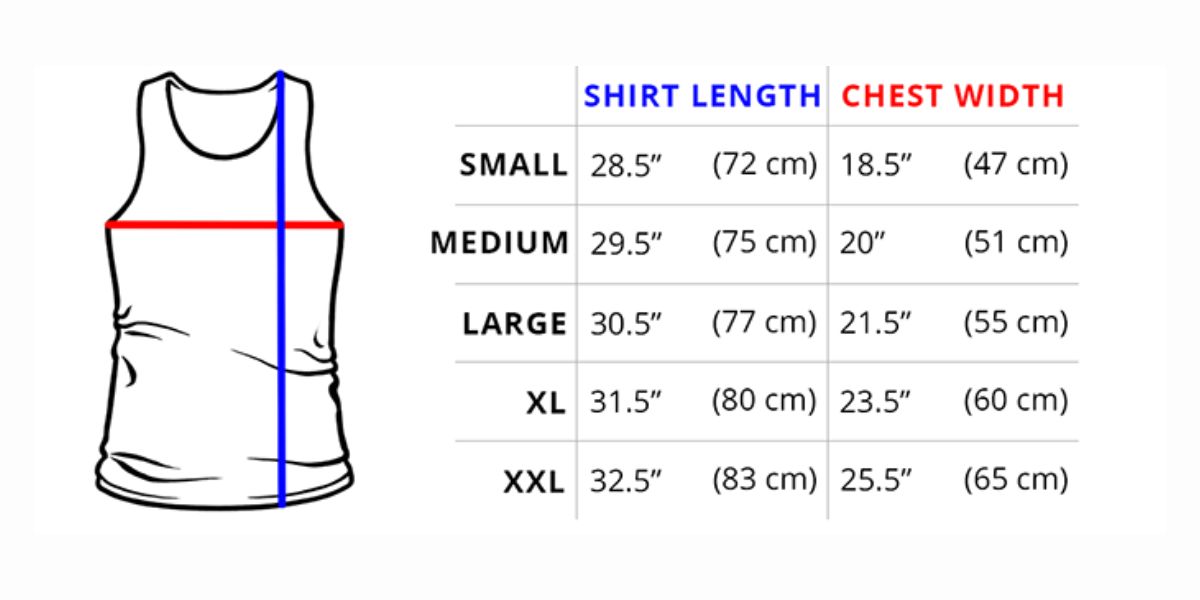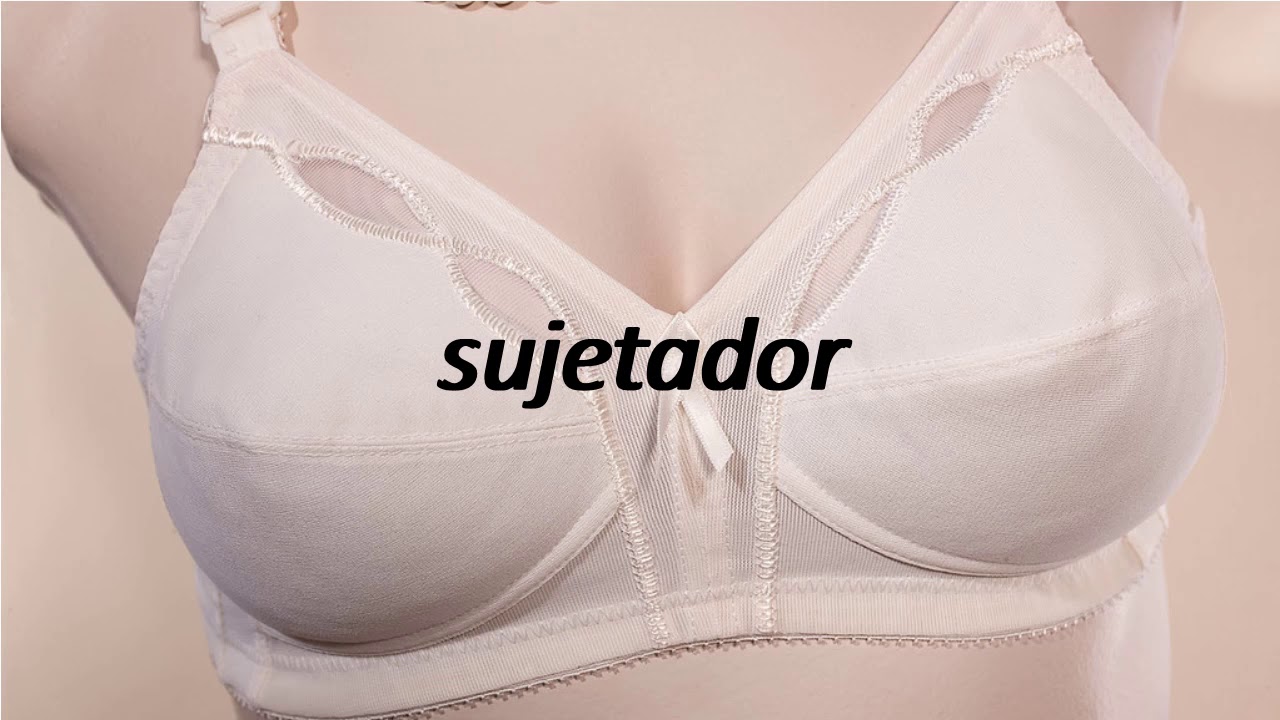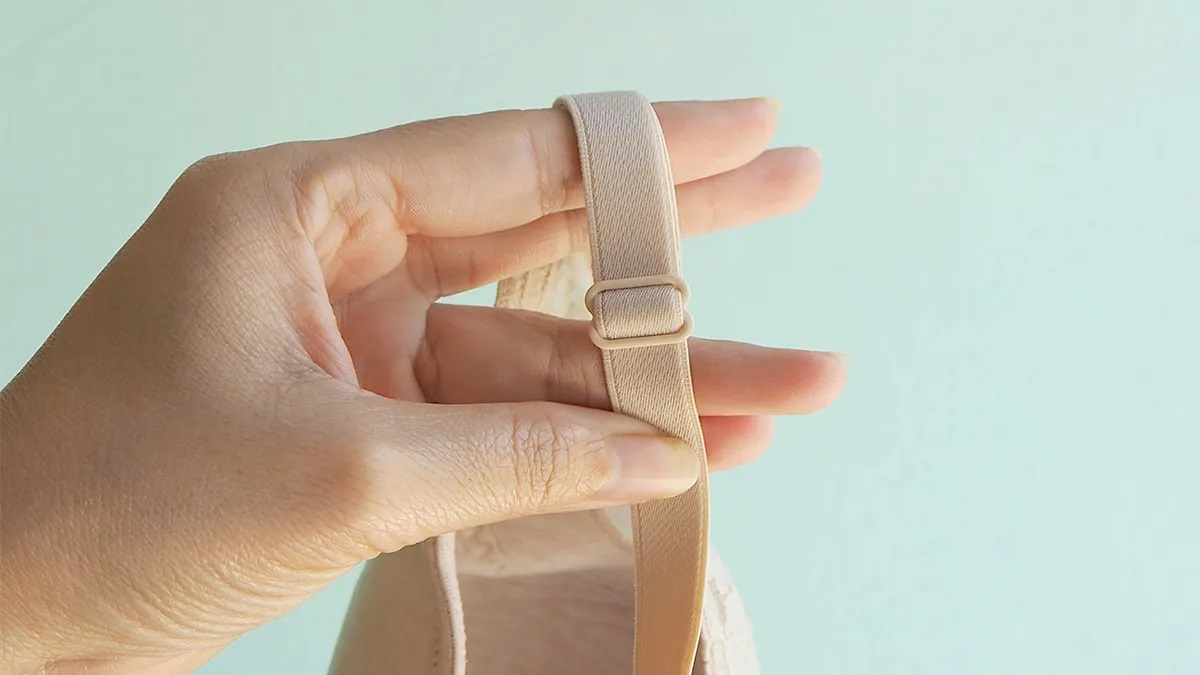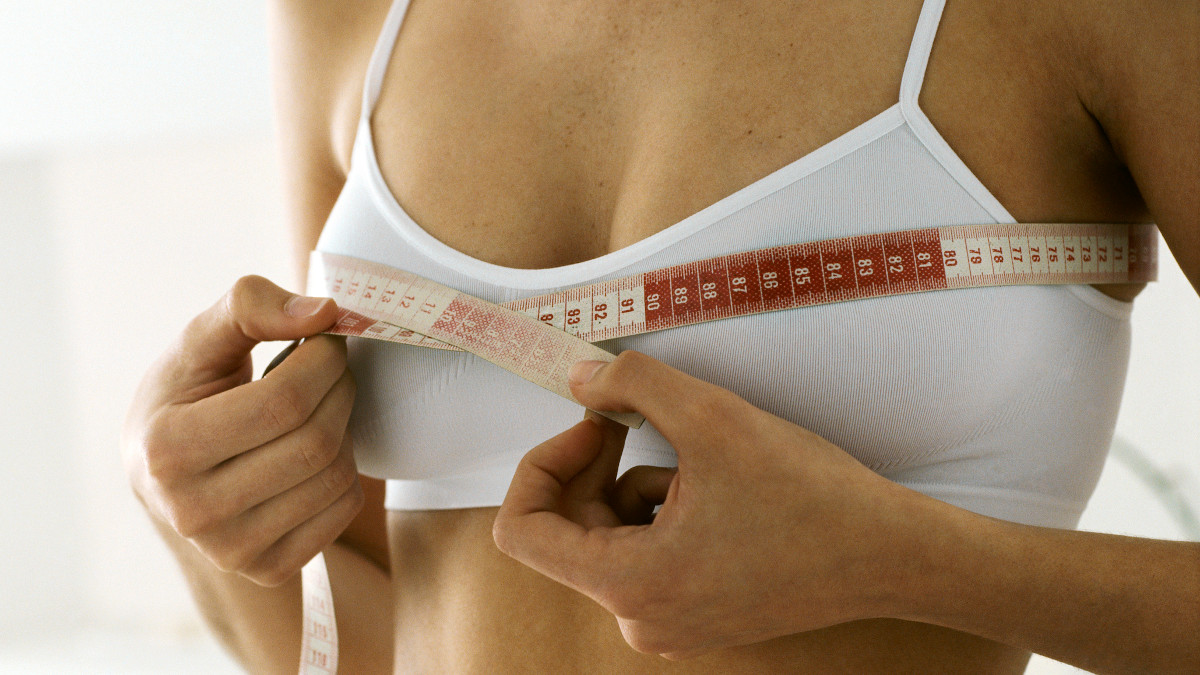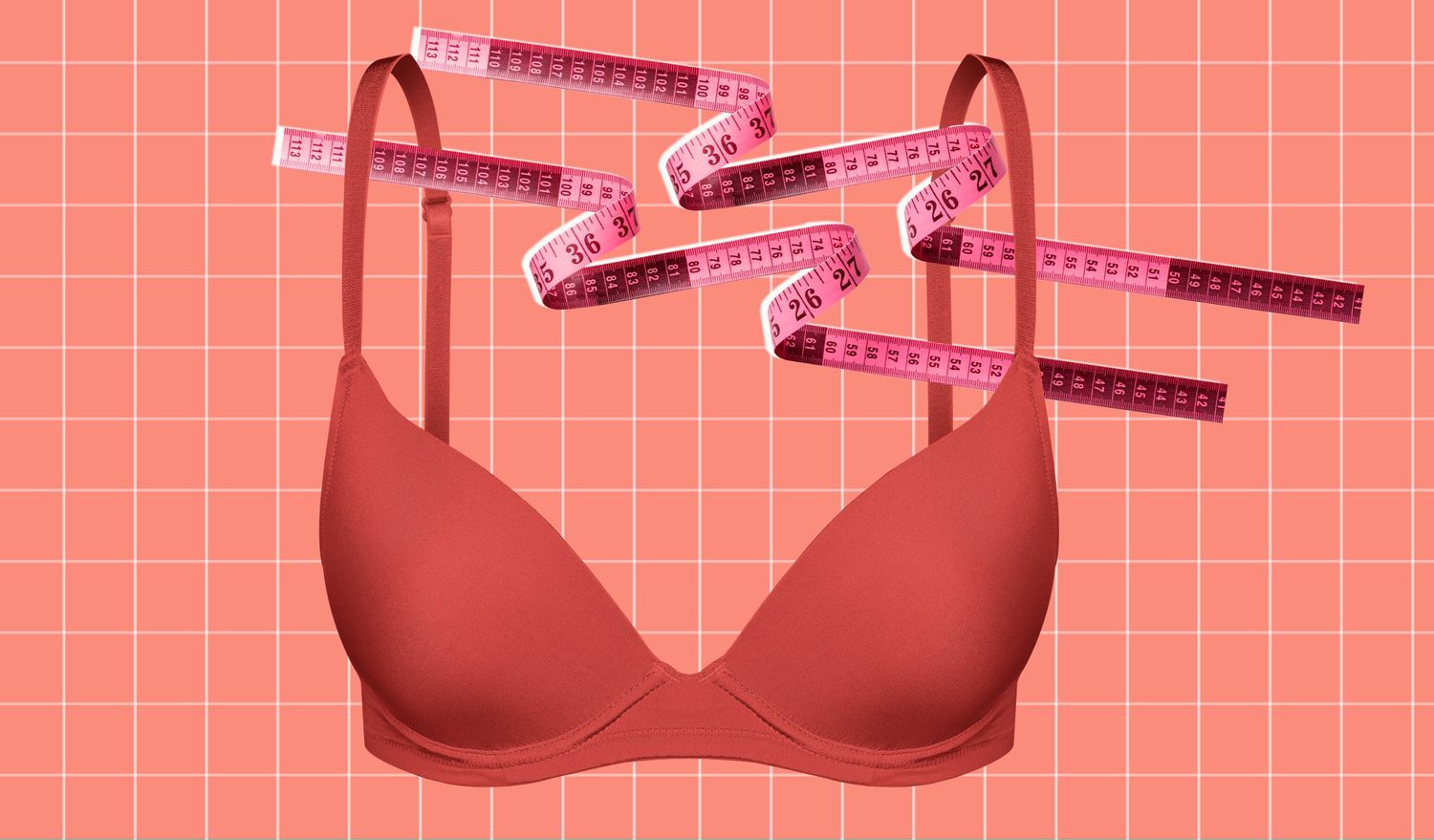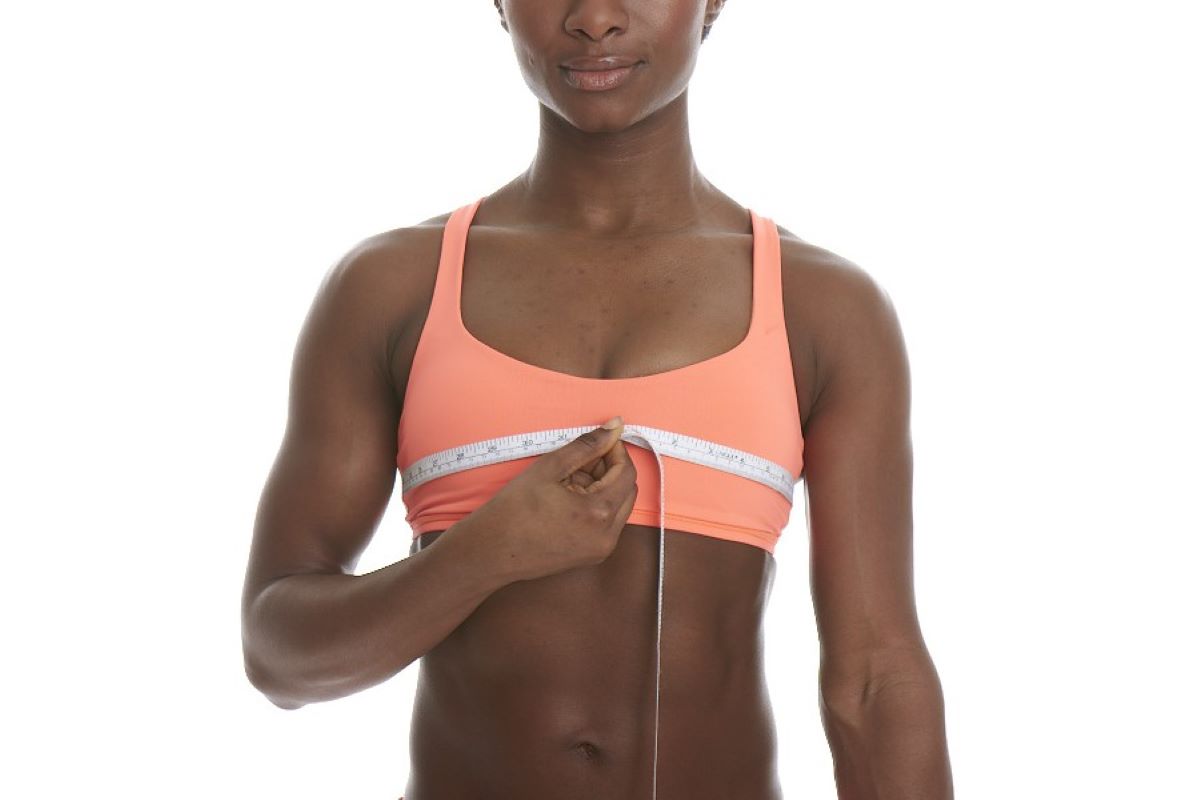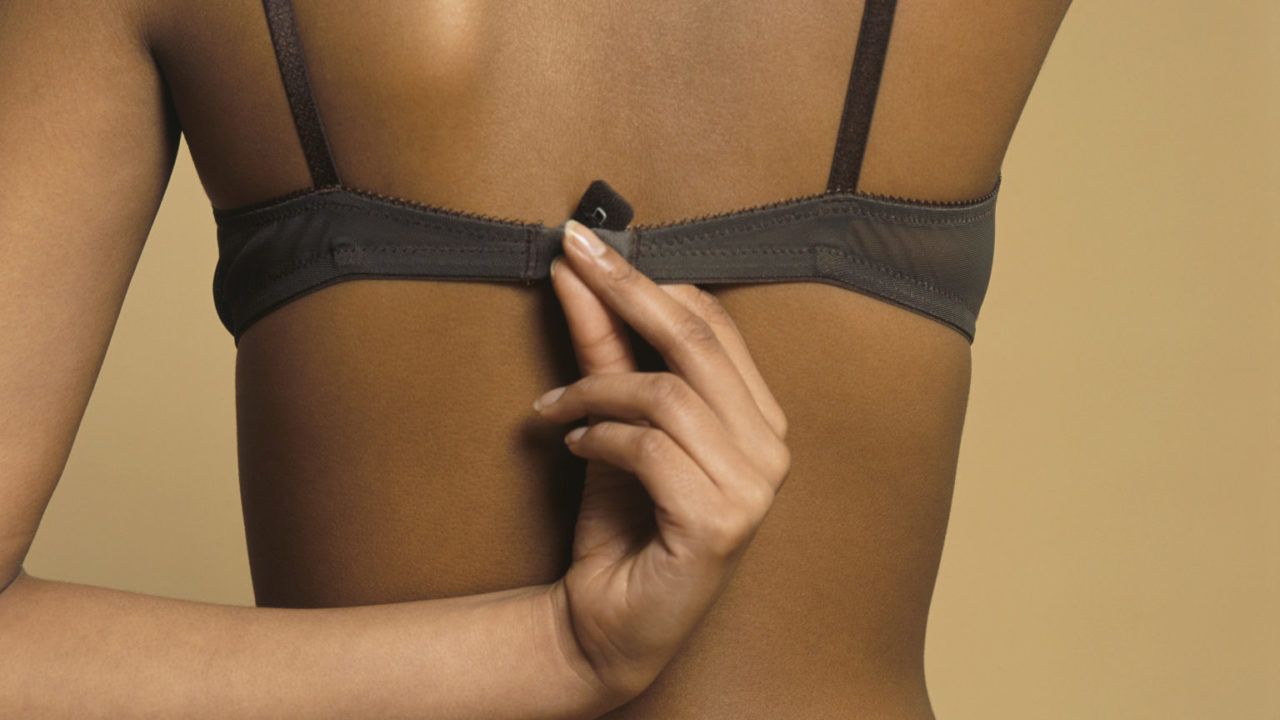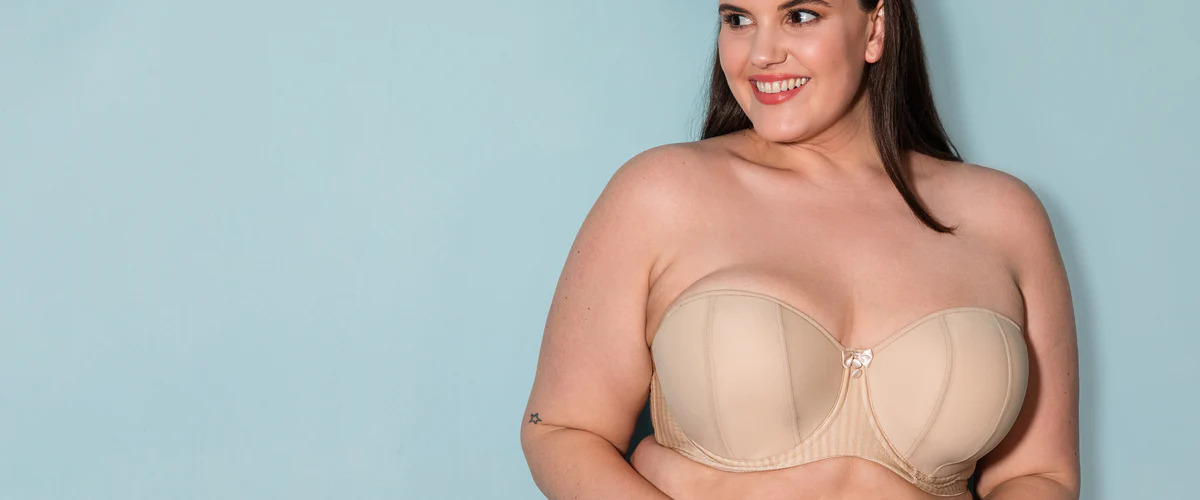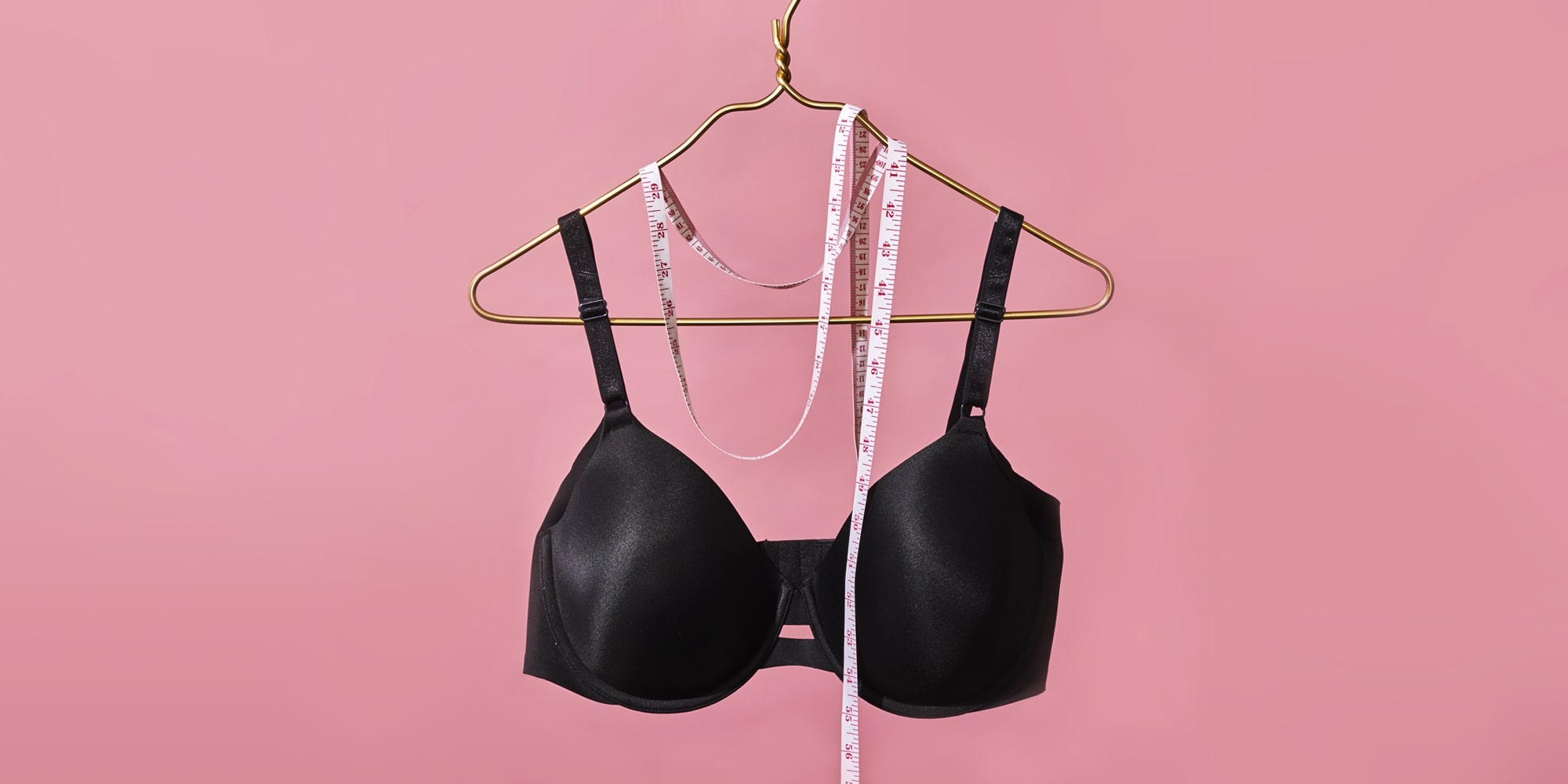Home>Women's Underwear>Bras>How Do You Measure Bra Size
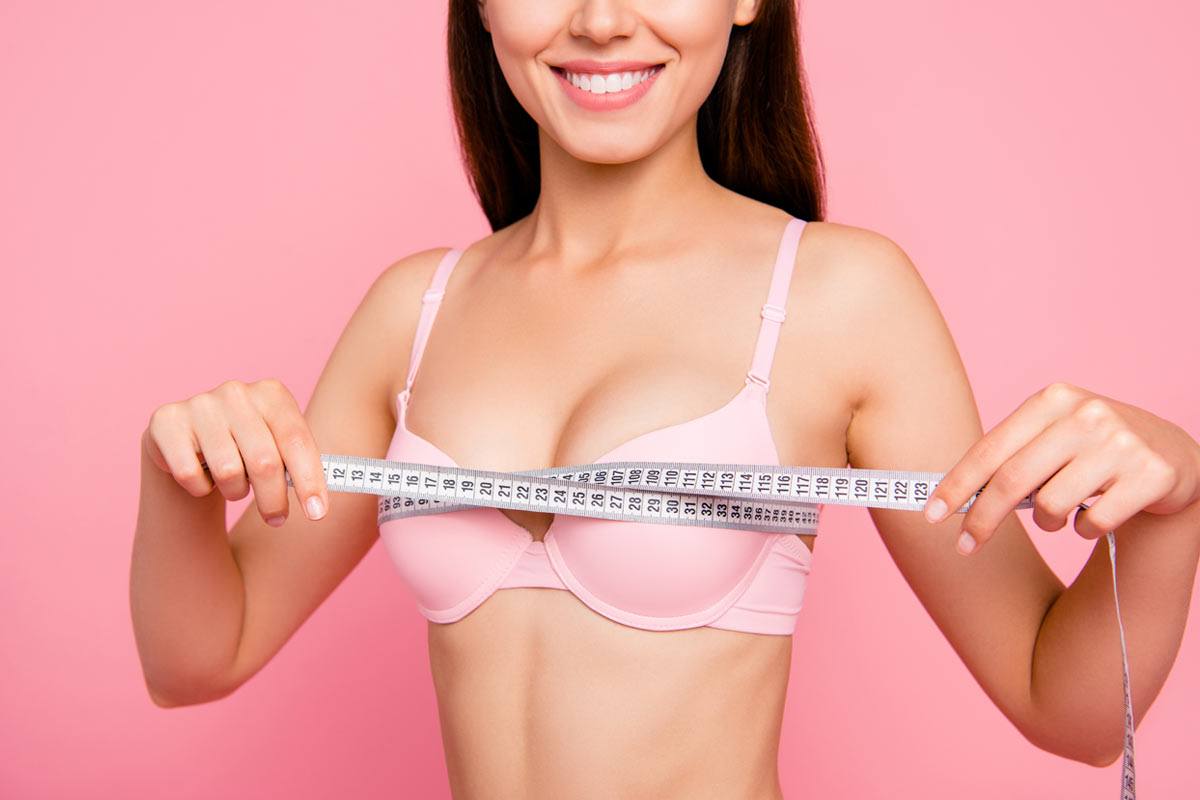

Bras
How Do You Measure Bra Size
Modified: September 23, 2023
Learn how to accurately measure your bra size to ensure a comfortable and supportive fit. Discover the importance of finding the right size, including tips and techniques for fitting bras.
(Many of the links in this article redirect to a specific reviewed product. Your purchase of these products through affiliate links helps to generate commission for Under-tec.com, at no extra cost. Learn more)
Table of Contents
Introduction
Welcome to the world of bras, where comfort, support, and style come together to enhance your confidence and make you feel fabulous. Every woman deserves a perfectly fitting bra that provides the right amount of support and accentuates her natural curves. However, finding the correct bra size can be a challenging task for many.
Understanding your bra size measurements is the first step towards finding the perfect fit. It’s not just about the number and letter combination; it’s about understanding the nuances of band size, cup size, and the factors that affect your overall bra size.
In this comprehensive guide, we will walk you through everything you need to know about measuring your bra size accurately. From determining your band size to finding your cup size and the common mistakes to avoid, we’ve got you covered. We’ll also explore the importance of regular bra size checkups and tips for finding the right bra style for your body type.
So, whether you’re a bra size novice or looking to refresh your bra wardrobe, grab a cup of tea and get ready to embark on a journey to discover your perfect fit. Let’s dive in!
Understanding Bra Size Measurements
Before we dive into the process of measuring your bra size, it’s important to understand how bra sizes are structured. A bra size consists of two components: the band size and the cup size.
The band size refers to the measurement around your torso, just under your bust. It is typically represented by a numerical value, such as 32, 34, or 36. The band size determines the base level of support and is crucial in providing a comfortable fit.
The cup size refers to the volume of your breasts and is represented by a letter, such as A, B, C, or D. Cup sizes can vary tremendously, and it’s important to find the right cup size that accommodates your breast volume properly.
Together, the band size and cup size create your unique bra size, such as 34B or 36D. It’s worth noting that bra sizing is not a one-size-fits-all concept, and the combination of band and cup sizes can vary from one brand to another.
Most bra size measurements are based on two key factors:
- Underbust Measurement: Measure directly under your bust, making sure the tape measure is snug but not too tight. Round this measurement to the nearest whole number to determine your band size.
- Bust Measurement: Measure around the fullest part of your bust, with the tape measure parallel to the ground. This measurement will help determine your cup size.
It’s important to note that these measurements are a starting point, and additional considerations may be taken into account to refine your bra size. This includes factors such as breast shape, symmetry, and personal comfort preferences.
Now that we have a basic understanding of how bra sizes are structured, let’s move on to the practical aspects of measuring your band size accurately. Remember, a well-fitting bra can make all the difference in terms of comfort, support, and confidence.
Measuring Your Band Size
Measuring your band size correctly is crucial for finding a bra that provides optimal support and comfort. Follow these steps to measure your band size accurately:
- Start by wearing an unpadded bra or no bra at all, as this will give you the most accurate measurements.
- Wrap a measuring tape snugly around your torso, just underneath your bust. Make sure the tape is parallel to the ground and level all the way around your body.
- Take note of the measurement in inches or centimeters. Round the measurement to the nearest whole number to determine your band size.
Keep in mind that band sizes typically range from 28 to 44, with some brands offering sizes outside this range. If your measurement falls in between two whole numbers, consider trying both sizes to see which feels more comfortable and supportive.
It’s important to note that your band size may vary depending on factors such as weight fluctuations, pregnancy, and even the style of the bra. Thus, it’s recommended to measure your band size periodically to ensure you are wearing the correct size.
Remember, the band of your bra should fit snugly around your ribcage without feeling too tight or constricting. A properly fitted band should provide the majority of the support, not the straps. If the band rides up or feels loose, consider trying a smaller band size. Conversely, if the band feels too tight and digs into your skin, try a larger band size.
Now that you have determined your band size, we can move on to the next step – finding your Cup Size.
Determining Your Cup Size
Once you have measured your band size, the next step is to determine your cup size. The cup size represents the volume of your breasts and is equally important for a proper bra fit. Follow these steps to determine your cup size accurately:
- Stand in front of a mirror and ensure that your shoulders are relaxed.
- Wrap the measuring tape around the fullest part of your bust, making sure it goes across your nipples. Make sure the tape is parallel to the ground and not too tight or too loose.
- Take note of the measurement and subtract your band size measurement from it. The difference between the two measurements will determine your cup size.
Here is a general guideline to help you determine your cup size based on the difference:
- If the difference between your bust measurement and band size measurement is 1 inch, you are an A cup.
- If the difference is 2 inches, you are a B cup.
- If the difference is 3 inches, you are a C cup.
- If the difference is 4 inches, you are a D cup.
- And so on…
Keep in mind that this is a general guideline, and cup sizes can vary between different brands and styles of bras. It’s always best to try on different cup sizes to find the one that provides the most comfortable and supportive fit for your unique shape.
If you find that your measurements fall between two cup sizes, for example, 2.5 inches, it’s advisable to try on both adjacent cup sizes to see which one fits better. Remember, the cup should fully encapsulate your breast without any spillage or gaps.
Now that you have determined your cup size, you can combine it with your band size to find your perfect bra size. For example, if your band size is 34 inches and your cup size is B, your bra size would be 34B.
Understanding how to measure your band size and determine your cup size is the foundation for finding a well-fitting bra. In the next sections, we will explore the factors that can affect your bra size and the common mistakes to avoid when measuring.
Factors Affecting Bra Size
While measuring your band and cup size is a crucial step, it’s important to understand that your bra size can be influenced by various factors. Here are some common factors that can affect your bra size:
- Weight fluctuations: Changes in weight can lead to changes in breast size. It’s essential to regularly reassess your bra size to ensure a proper fit.
- Hormonal changes: Hormonal fluctuations during different stages of life, such as puberty, pregnancy, and menopause, can cause changes in breast size. It’s common for women to experience fluctuations in their bra size during these periods.
- Age: As we age, the elasticity of our breast tissue can change, resulting in changes in breast shape and volume. Regular bra size checkups are recommended to accommodate these changes.
- Breast shape and density: Every woman has a unique breast shape and density, which can impact the way bras fit. Some individuals may have more fullness on the top or bottom, while others may have uneven breast sizes. It’s important to consider these factors when selecting bra styles and sizes.
- Style and brand of the bra: Different bra styles and brands may fit differently due to variations in design, construction, and sizing systems. It’s advisable to try on different styles and brands to find the ones that fit you best.
It’s important to keep these factors in mind and be open to adjusting your bra size as needed. Regularly reassessing your bra size and paying attention to changes in your body will ensure that you always have bras that provide the best support and comfort.
In the next section, we will discuss some common mistakes that people make when measuring their bra size and how to avoid them.
Common Mistakes in Measuring Bra Size
While measuring your bra size may seem straightforward, there are some common mistakes that people make, leading to incorrect sizing and ill-fitting bras. By avoiding these mistakes, you can ensure a more accurate measurement and find bras that truly fit you. Here are some of the most common mistakes to avoid:
- Skipping the band measurement: Some people solely rely on their cup size or make assumptions based on their clothing size. However, the band size is just as important in achieving a proper fit and providing essential support.
- Measuring over clothing: To get accurate measurements, always measure your band size and bust size directly on the skin, or with a thin, unpadded bra. Measurements taken over thick clothing or padded bras can result in incorrect sizing.
- Not measuring often enough: It’s recommended to measure your bra size at least once a year, as factors such as weight fluctuations or hormonal changes can impact your size. Regular measurements ensure your bras adapt to your changing body.
- Not considering breast shape: Breast shape plays a crucial role in finding the right bra fit. Some styles may work better for fullness on the top, while others may suit fuller bottoms. Understanding your breast shape can help you choose the most flattering and comfortable bras.
- Ignoring comfort: Ultimately, the goal is to find bras that feel comfortable and supportive. Don’t get too fixated on the numbers and letters, but pay attention to how the bra feels on your body and how it enhances your natural shape.
By avoiding these common mistakes, you can significantly improve your chances of finding bras that fit well and make you feel confident. Remember, bra sizing is not an exact science, and it may require some trial and error to find the perfect fit.
In the next section, we will explore some optimal bra fitting techniques that can help you achieve the best possible fit.
Optimal Bra Fitting Techniques
Now that you are aware of the common mistakes to avoid when measuring your bra size, let’s focus on some optimal bra fitting techniques that can help you achieve the best possible fit. These techniques will ensure that your bras provide the necessary support, comfort, and enhancement for your natural shape.
- Adjust the band: The band should fit snugly around your ribcage. If it feels loose, try tightening the band by adjusting the hooks to a tighter setting. If it feels too tight, try loosening the band by adjusting to a looser hook setting or trying a larger band size.
- Check the underwire: For bras with underwire, ensure that the wire sits flat against your ribcage without digging into your breast tissue. The underwire should encase your entire breast, providing support and lift.
- Straps should be firm but not too tight: The straps should provide some support, but the majority of the support should come from the band. Adjust the straps so they feel comfortable on your shoulders, but avoid having them dig into your skin or slip off.
- No spillage or gaps: The cups should fully encapsulate your breasts without any spillage over the top or gaps at the sides. The cup should provide a smooth and seamless look under clothing.
- Move around: When trying on bras, move around, lift your arms, and lean forward to ensure that the bra stays in place and provides the necessary support in various positions.
It’s important to remember that every individual has unique needs and preferences when it comes to bra fitting. Don’t hesitate to try on different brands, styles, and sizes to find the ones that work best for you. You may find that certain styles or materials provide a better fit and comfort level.
Lastly, trust your own comfort and judgment. If a bra feels uncomfortable, causes pain, or doesn’t make you feel confident, it’s not the right fit for you. Don’t be afraid to explore different options until you find bras that make you look and feel amazing.
In the next section, we will discuss the importance of regularly checking and updating your bra size.
Finding the Right Bra Style for You
While finding the correct bra size is essential, it’s equally important to find the right bra style that suits your body type and meets your comfort and style preferences. Different bra styles offer varying levels of support, coverage, and shaping, allowing you to choose one that aligns with your needs. Here are some popular bra styles to consider:
- T-shirt bras: These bras are designed with smooth, seamless cups that provide a rounded shape and invisible look under fitted tops and T-shirts. They are great for everyday wear.
- Balconette bras: Balconette bras have a lower-cut design with wide-set straps, creating a lifted and flattering neckline. They work well under clothes with lower necklines or square necklines.
- Push-up bras: Push-up bras are designed to enhance and lift your breasts, creating a fuller and more defined cleavage. They are ideal for special occasions or when you want an added boost to your silhouette.
- Sports bras: Sports bras are specifically designed to provide high-impact support and minimize movement during physical activities. Look for features like encapsulated cups, adjustable straps, and moisture-wicking fabric.
- Bralettes: Bralettes are wire-free, lightweight, and comfortable alternatives to traditional bras. They often come in lace or soft fabric with minimal support, making them perfect for lounging or casual wear.
- Minimizer bras: Minimizer bras are designed to redistribute breast tissue to create a slimmer appearance. They are ideal for those who want to minimize the appearance of their bust size under specific clothing.
Remember, the right bra style for you will depend on personal preference, body shape, and the level of support and coverage you desire. Experiment with different styles to find the ones that make you feel confident and comfortable.
Additionally, it’s helpful to consider factors such as strap placement, closure types, fabric choices, and special features like convertible or adjustable straps to further customize your bra-wearing experience.
Lastly, don’t limit yourself to just one bra style. Building a diverse bra wardrobe with different styles will allow you to confidently tackle any outfit or occasion that comes your way.
In the next section, we will emphasize the importance of regular bra size checkups and measurements.
Importance of Regular Bra Size Checkups
Keeping track of your bra size and regularly checking for any changes is essential for maintaining comfort, support, and overall breast health. Here are some reasons why regular bra size checkups are important:
- Body changes: Our bodies are constantly changing due to factors like weight fluctuations, hormonal fluctuations, aging, and even lifestyle changes. These changes can impact our bra size and shape, making it crucial to reassess our measurements periodically.
- Comfort and support: Wearing the wrong bra size can lead to discomfort, pain, and inadequate support. Regular bra size checkups ensure that you are wearing bras that offer the best possible comfort and support for your current size and shape.
- Enhanced appearance: Wearing a bra that fits properly enhances your natural shape, gives you a more flattering silhouette, and boosts your confidence. Regular checkups ensure that you are making the most of your assets and achieving the desired look under your clothes.
- Optimal health: Wearing the wrong bra size can have negative effects on your breast health. Ill-fitting bras can compress breast tissue, restrict lymphatic flow, and cause discomfort. By wearing the right size, you promote healthy circulation and lymphatic drainage.
- Breast changes and conditions: Regular measurements and checkups enable you to detect any changes in your breast size, shape, or texture. This can be an early indication of potential health concerns, allowing for timely medical intervention if necessary.
It’s recommended to check your bra size at least once a year, but it’s also important to listen to your body and make adjustments when needed. If you experience any discomfort, pain, bulging, or lack of support, consider getting measured and trying different bra sizes or styles.
Take the time to measure yourself properly, either on your own or with the assistance of a professional bra fitter. Remember that a bra is more than just an undergarment – it’s a foundational piece that contributes to your overall well-being and confidence.
In the concluding section, we will summarize the key points discussed in this article and reiterate the importance of finding the right bra size for a comfortable and confident experience.
Conclusion
Finding the right bra size is crucial for every woman. It is the key to comfort, support, and confidence. Understanding the components of bra size, measuring accurately, and taking into account factors that affect bra size are all important steps in this process.
By measuring your band size and determining your cup size correctly, you can lay the foundation for finding bras that fit you perfectly. Avoiding common measurement mistakes and utilizing optimal fitting techniques will further enhance your bra-wearing experience.
It’s also important to find the right bra style that suits your body type, lifestyle, and personal preferences. From t-shirt bras to sports bras and everything in between, exploring different styles will ensure that you find bras for all occasions.
Regular checkups and measurements of your bra size are crucial. Your body changes, and staying up-to-date with your measurements will help you maintain comfort, support, and optimal breast health. Never hesitate to seek professional assistance or advice when needed.
Remember, a well-fitting bra is more than just an undergarment. It is a source of confidence, comfort, and self-expression. Don’t settle for less than what you deserve. Invest in bras that make you look and feel amazing!
So, embrace the journey of finding your perfect fit, explore different styles, and prioritize your well-being. You and your breasts deserve nothing but the best support.
